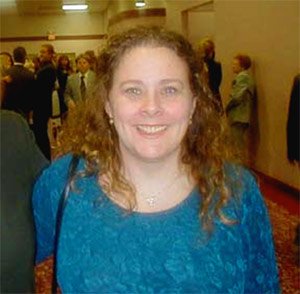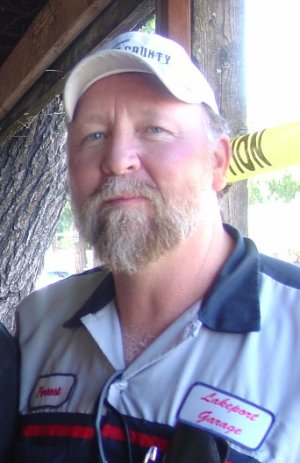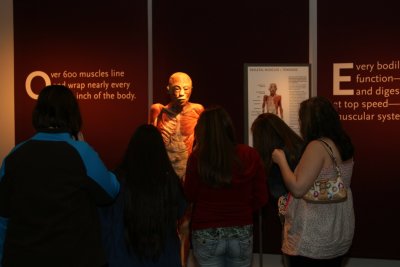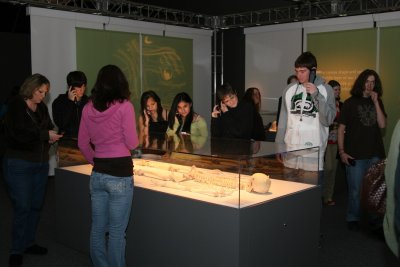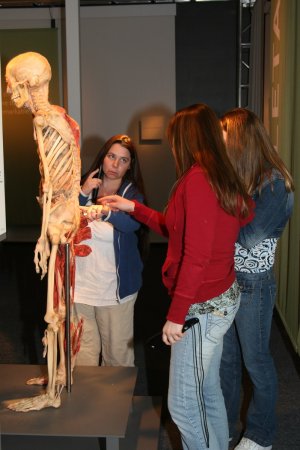LAKE COUNTY – The state budget is months away from taking its final form, but a multibillion-dollar deficit anticipated in the 2009-2010 fiscal year and cuts proposed earlier this year have Californians concerned about parks, schools and a variety of other services.
In January Gov. Arnold Schwarzenegger released his proposed budget, which suggested 10-percent, across-the-board cuts of all state departments.
One of the most shocking proposals contained in Schwarzenegger's severe budget-cutting plan was the closure of 48 state parks, including Clear Lake State Park and Anderson Marsh State Historic Park, as Lake County News has reported.
The future of parks and other critical funding is likely to come into clearer focus later in the spring.
Roy Stearns, spokesman for the State Parks Department, told Lake County News that a lot is riding on the governor's “May revise,” the updated budget document he'll submit shortly.
That document, said Stearns, will be based on additional information the governor has received since his initial budget was released in January. It will the be up to the state Legislature to respond and begin hashing out a final budget.
So far, said Stearns, the parks department hasn't received any indication of what changes might be in store.
If the budget were to pass as it is now written, “We would absolutely be closing some parks,” said Stearns.
“After more than a decade of repeated cuts, all the efficiencies are gone in our department and the only viable alternative is to close some to keep others open and marginally healthy,” he said.
Stearns said the Assembly and the Senate are now holding hearings, and State Parks Director Ruth Coleman and her staff have been before budget committees of both houses at least once. “What we have heard from both Republicans and Democrats is that neither wants to close parks, but so far, there is no clear proposal as to how to fill our $13+ million reduction to not have that happen,” Stearns reported.
Parks officials don't believe they'll actually have to lay off permanent employees, said Stearns. “We have about 300 vacancies in the department and the reductions called for in the present budget proposal would eliminate about 136 positions and we feel we can cut vacancies to keep real people.”
Stearns said that will mean that, in many cases, workers will have to move to an area where there is a park with a vacancy requiring their specific job skills.
Local resources could be lost
Richard Bergstresser is a Humboldt County park ranger and board member with the State Park Peace Officers Association of California, a labor organization representing the state's park rangers and lifeguards.
The closures, said Bergstresser, will take good, well-paying jobs out of the community, and cause upheaval for many longtime parks employees, not to mention the lose of important tourism opportunities.
Local parks Superintendent Jay Sherman said he has four full-time ranger positions, a part-time office assistant and five full-time maintenance personnel. In addition, the parks employ four seasonal maintenance positions and about eight more season visitors services staff who collect entrance fees, and conduct school, campfire and Junior Ranger programs.
Two local field ranger positions are vacant with the December retirements of husband-and-wife team, Tom and Val Nixon. Tom Nixon began work at Clear Lake State Park in 1981; his wife started there seasonally in 1978.
Val Nixon told Lake County News that the park hasn't been able to fill the positions she and her husband held because of a statewide ranger shortage. Instead, a ranger trainee is scheduled to begin at the park in July.
The Nixons now volunteer at Clear Lake State Park. Val Nixon said there were threats before of closures but “we've never seen a list before,” or seen a park closure.
Sherman added that, in his 17 years as a State Parks employee, he hasn't seen closures, although he's seen reduced hours and days that parks were open to the public.
The good thing about the park closure proposal is that it has rallied support for parks, said Nixon. She said she's been pleased to see local residents rally to speak up on behalf of parks.
Sherman agreed. “The community is doing a fantastic job getting the word out.”
However, threatening to close – and actually closing – parks can result, ultimately, in a loss of public support, Nixon said.
The California State Parks Foundation reports that the two local state parks attract nearly 150,000 annual visitors and generate more than $334,000 in revenue – not counting impact on area businesses and the hospitality industry.
Nixon said Clear Lake State Park, especially, is extremely busy during the summer. However, parks are expensive to run and “never run at a profit,” she said.
Sherman added that Clear Lake State Park is popular both for camping and day use, and is widely visited by area residents.
Day use passes at Clear Lake State Park cost $5, $2 at Anderson Marsh, said Nixon. Both parks offer $1 off for seniors.
It was those overly affordable day fees that state Legislative Analyst Elizabeth Hill proposed last month should be raised in order to keep the parks open.
Hill's office analyzed park user fees and determined that they haven't kept pace with inflation. She suggested increasing park fees, which she estimated could raise $25 million, roughly half of which could be used to offset the closures and the rest could be used to go toward ongoing maintenance.
Sherman said the parks had a small, across-the-board fee increase about four years ago.
Closing the 48 parks would save a mere $8.8 million, a drop in the bucket when looking at the state's budget, said Bergstresser. The costs, he said, could be much higher. “It's going to be a major hit across many sectors of the economy.”
Unforeseen consequences
But Bergstresser pointed to another concern that he says hasn't gotten as much attention – just what will happen to these mothballed parks?
Lake County's parks are under the Northern Buttes District, headquartered in Oroville, said Bergstresser. That would mean already short-staffed parks in Colusa and Oroville would be required to send over staff on an occasional basis to check on Anderson Marsh and Clear Lake State Parks.
The result, he said, would be serious neglect issues, which could lead to vandalism and natural degradation.
Sherman said, in the worst-case scenario of a park closures, he thinks it likely that someone would be left as a caretaker for local park lands.
Once closed, Bergstresser said it's unlikely that the parks could be counted on to either be maintained or reopened, considering a current backlog of $1 billion in deferred maintenance for state parks.
Sherman said deferred maintenance for local parks goes back many years, but recently they've been catching up. They're now finishing up improvement to Clear Lake State Park's day use picnic area and this fall intend to begin upgrades, repairs and replacements to the parks water and wastewater system.
Other planned projects include making the park more accessible under Americans with Disabilities Act requirements and improving Dorn trail, Sherman said.
The Clear Lake State Park Interpretive Association also is raising money to build an education pavilion, he added.
It's hard to know, Bergstresser said, if the closure proposal is just a shot across the bow at the beloved state parks, or if it really will happen.
The “unprecedented” action of park closure was threatened during Gov. Pete Wilson's administration, said Bergstresser.
“State parks, as a whole, have been on a starvation diet for the last 20 years, since the Wilson administration,” he said.
E-mail Elizabeth Larson at This email address is being protected from spambots. You need JavaScript enabled to view it..
{mos_sb_discuss:2}

